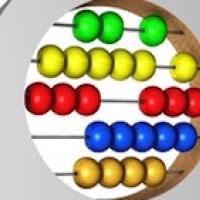

Some tricks to help you with your mental arithmetic when you're dealing with reversible numbers.
Reversible numbers, or more specifically pairs of reversible numbers, are whole numbers in which the digits of one number are the reverse of the digits in another number, for example, 2847 and 7482 form a reversible pair. Reversible pairs prove interesting because of the unexpected way in which they allow addition and subtraction to be carried out — a way that facilitates mental arithmetic. This is best illustrated with a couple of examples.
Addition
Take a reversible pair such as $13$ and $31.$ The addition of these two numbers can in this case be performed quite simply by taking the sum of the two digits and multiplying it by 11: $$ 1+3 = 4 \mbox{ and } 4 \times 11 = 44, \mbox{ so } 13+31 = 44.$$ Let's try this again with the pair $82$ and $28:$ $$ 8+2 = 10 \mbox{ and } 10 \times 11 =110, \mbox{ so } 82+28 = 110.$$Subtraction
Subtraction is carried out in a similar fashion, except the difference between the two digits is taken and the result multiplied by 9. For example, in subtracting $13$ from $31$ we have $$ 3-1 = 2 \mbox{ and } 2 \times 9 = 18, \mbox{ so } 31-13 = 18.$$ Similarly, for $28$ and $82$ we have $$ 2-8 = -6 \mbox{ and } (-6) \times 9 = -54, \mbox{ so } 28-82 = -54.$$ It works like magic. But why?The underlying theory
Any positive whole number $a$ which is less than $100$ is written with two digits $x,y$: $$a=10x+y.$$ Its reverse is therefore $$b=10y+x.$$ For example, if $a=82$ and $b=28,$ we have $x=8$ and $y=2:$ $$82 = 10 \times 8 +2 \mbox{ and } 28 = 10 \times 2 + 8.$$ The sum of $a$ and $b,$ then, is $$a+b = (10x+y) + (10y+x) = 11x + 11y = 11(x+y).$$ Similarly, their difference is $$a-b = (10x+y) - (10y+x) = 9x + 9y = 9(x-y).$$ The result also holds if $a$ is a number that ends in $0,$ such as $a=10.$ In this case, $b=01 = 1.$Triple digit numbers
Does something similar work for triple digit numbers? We can use the same method as above to derive the corresponding equations. A positive whole number $a$ with the digits $xyz$ is equal to $$a = 100x + 10y+z.$$ Its reverse will therefore be $$b = 100z+10y+x.$$ For the sum we get $$a+b = (100x + 10y+z) + (100z+10y+x) = 101(x+z) + 20 y.$$ For the difference we get $$a-b = (100x + 10y+z) -(100z+10y+x) = 99(x-z).$$
The general case
Can we extend these results to numbers with more digits? In the case of a four-digit reversible number $xyzw$ the equations become $$a+b = 1001(x+w)+110(y+z)$$ and $$a-b = 999(x-w)+90(y-z).$$ For a general $n$-digit number, written as $x_1x_2x_3...x_n$ the equations are $$a+b = 10^{n-1} \left(x_1 + x_n\right) + 10^{n-2}\left(x_2+x_{n-1}\right) + 10^{n-3}\left(x_3+x_{n-2}\right) + ...+\left(x_n+x_1\right)$$ and $$a-b = 10^{n-1} \left(x_1 - x_n\right) + 10^{n-2}\left(x_2-x_{n-1}\right) + 10^{n-3}\left(x_3-x_{n-2}\right) + ...+\left(x_n-x_1\right).$$This looks a lot more complicated. There are limits, then, as to how far we can go in finding the sum and difference of two reversible numbers this way. But that does not detract from its usefulness within those limits!
Further reading
Find out more about reversible numbers in Michael P. Greaney's Little book of reversible numbers.
About the author

Michael P. Greaney is a writer with particular interests in astronomy and mathematics. Apart from the Little book of reversible numbers, he has written articles for a number of astronomical magazines and was a contributing author to the book Observing and Measuring Visual Double Stars (Springer, 2012).